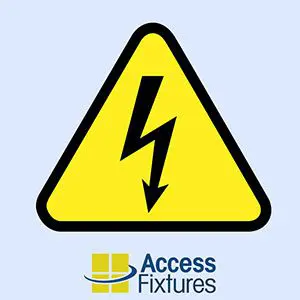Some fixtures produce more light at the same input power than others. The energy used is measured in watts. The light output is measured in lumens. The wattage used is not directly related to the lumen output. Some fixtures have a higher efficacy. This means that the technology generates more lumens per watt. An efficient fixture will put out more lumens per watt (LPW) than an inefficient fixture.

This is really relevant for any organization, property owner, architect, or electrician. Lighting typically accounts for nearly 40% of a commercial building’s power bill. Also, a higher LPW ratio reduces the heat generated to produce the light. HVAC loads are affected by lighting loads. Every watt of power used by your lighting system generates 3.414 BTUs. More wattage means more heat; the HVAC must compensate for that heat.
While LPW is important, it is not the only consideration. Maintenance of the lighting, light quality, and the application of the area being lit must also be taken into consideration. Still, an efficient lighting system will deliver quick payback to your organization. If you are not sure what fixtures to use for your project, the staff at Access Fixtures will be glad to help you select the right lighting fixtures.
Wattage
Light fixtures and comprehensive lighting systems require electricity in order to produce light. The amount of electricity is measured in watts (W). Utility companies measure watts expressed as kilowatts (1000 watts = 1 kilowatt); this is how they calculate monthly electrical bills. Reducing the wattage of fixtures used for lighting reduces energy use and, consequently, the power bill.
When measuring wattage, it is important to look at the entire lighting fixture and not just the bulb. Fluorescent and high intensity discharge (HID) fixtures have ballasts, which also use power. The wattage value you should consider is system wattage, which accounts for the watts used by the bulb, the ballast, and any other component within the luminaire. For instance, an HID 400w metal halide (MH) high bay will use 400 watts for the bulb and usually about 58 watts for the ballast, for a total of 458 watts.
Lumens
Different fixtures produce different amounts of light. The quantity of light is measured in lumens. Watts for the lamp and lumen ratings are specified on the packing of the lamps. As some fixtures are more efficient than others, some will produce more lumens per watt than others. In some types of technology, the ballast can seriously affect lumen output.
The data is further complicated when you consider the difference between light source lumens and delivered lumens. Light source lumens are the lumens emitted by the lamp or array itself. Delivered lumens, however, is the measure of the lumens that actually leave the fixture. The latter is most relevant, as it accounts for light lost when passing through the glass/lens and through reflection. Some lamps are also more efficient than others, which means both their light source lumens and delivered lumens will be higher, even if the wattage is the same as other lamps. Just as with watts, it is important to know what lumen data you’re using.
Lumens per Watt
Lumens per watt (LPW) is an expression of how many lumens you get from a light source vs. how much energy or wattage is being used. Fixtures with high LPW can be considered more efficient than other fixtures.
Incandescent fixtures generate about 17–20 LPW, while some fluorescent fixtures put out over 90 LPW. This means the fluorescent fixture costs about 80% less to operate, yet puts out the same number of lumens. The more efficient the fixture is, the lower the operating cost. Fixtures with high LPW are more environmentally friendly, too.
LPW is easily calculated by taking dividing lamp lumens by total wattage. Fluorescent and HID fixtures suffer significant lumen depreciation. This means that as the lamps age, the HID lamps emit fewer and fewer lumens. LEDs also experience lumen depreciation, but it isn’t nearly as severe as that of fluorescent and HID. To account for lumen depreciation, most manufacturers have data on initial lumens and mean lumens.
Most labels will only use initial lumens, as it is the most attractive data point. The mean lumen rating may only be available in the lamp manufacturer’s catalog. You can also speak to a lighting specialist at Access Fixtures for more information
Regulation
Many states have regulations that limit the watts used per square foot. Requirements vary from state to state and sometimes on whether a project is a new install or a renovation. Be sure to check if your project is regulated and, if so, the energy-usage limits for your purpose and location.
Access Fixtures is your factory-direct source for all light fixtures needed to suitably illuminate your property. If you have a lighting question, we will be glad to answer your questions. We want to make sure you get the exact fixture for your needs, your budget, and your goals. We are passionate about lighting and love what we do—we’ll get you an answer. To speak with an Access Fixtures lighting specialist, call (800) 468-9925.






